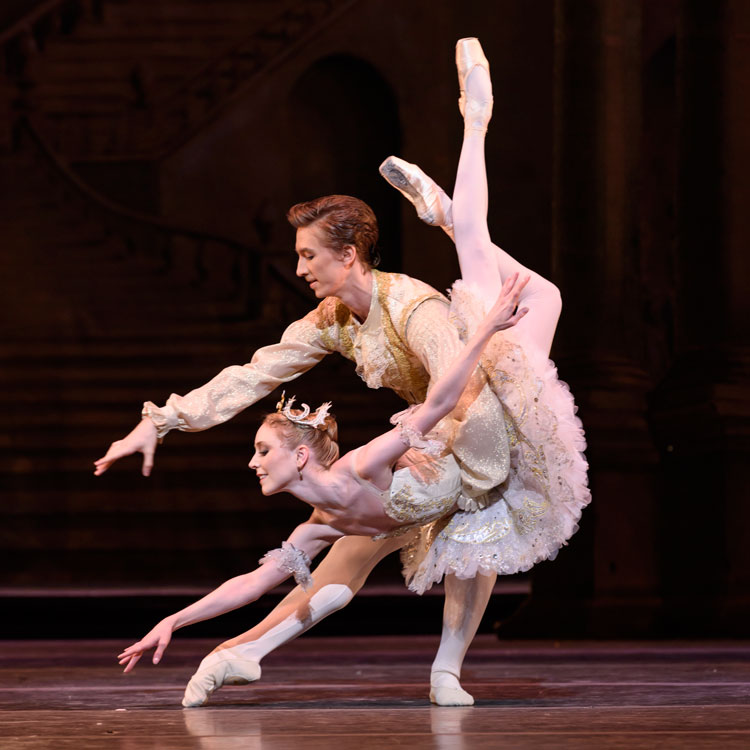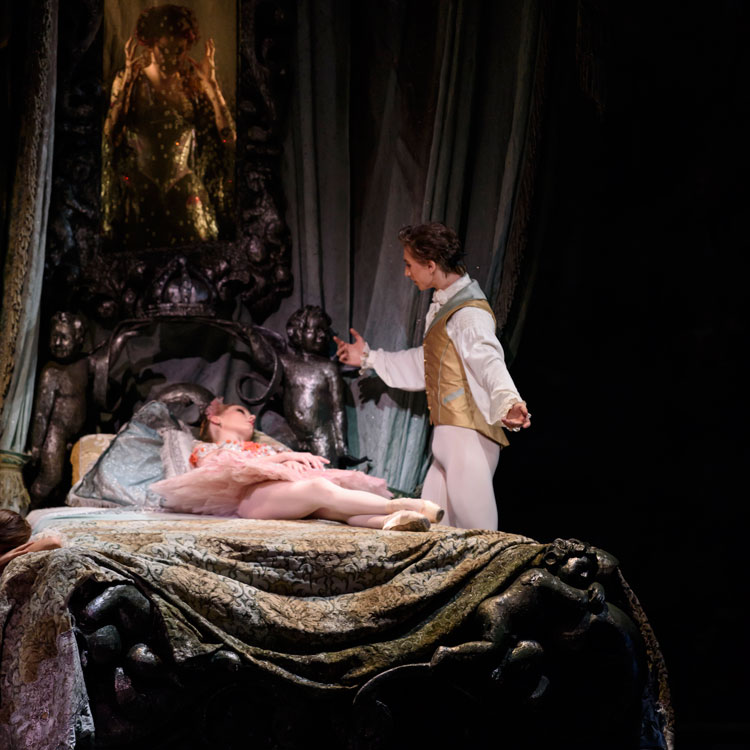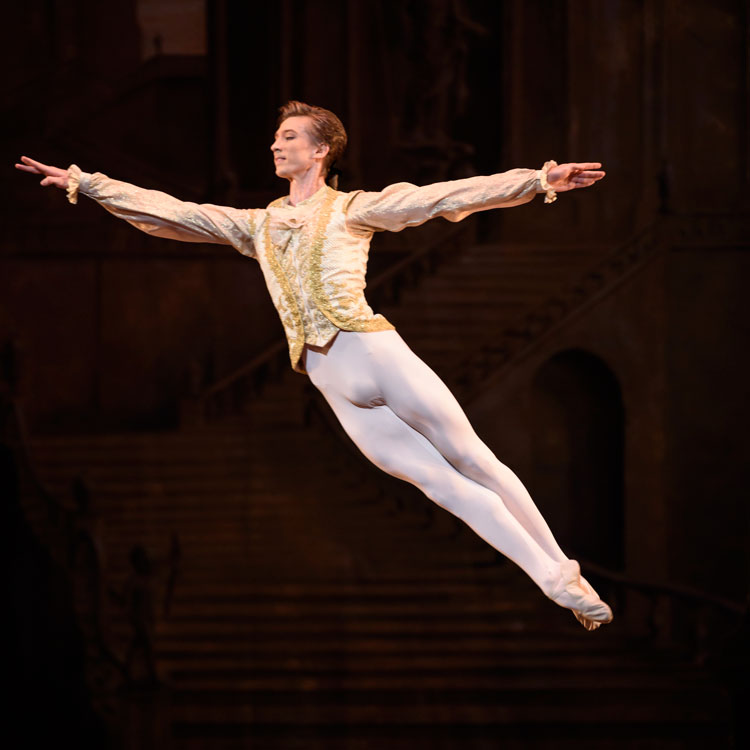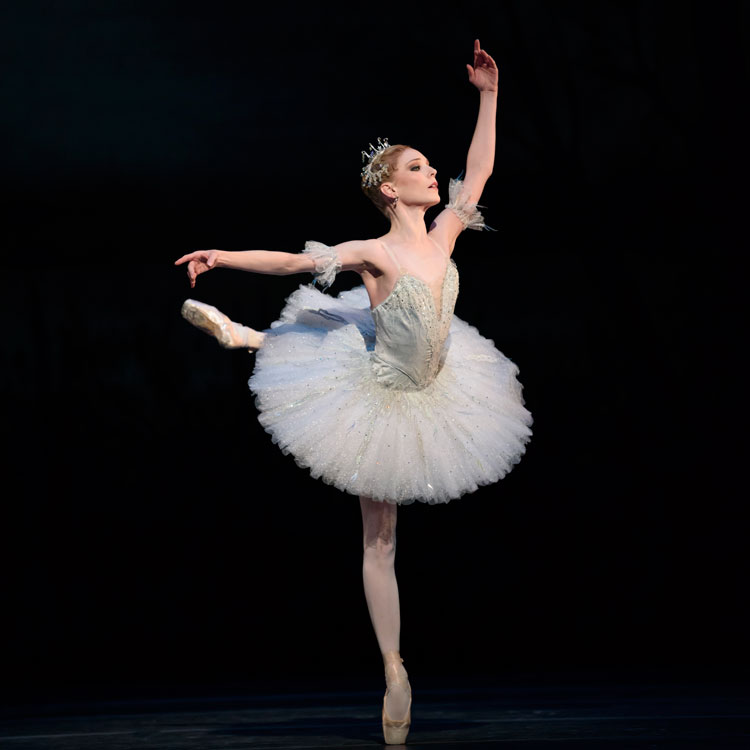Exploring the genius of The Sleeping Beauty
Sarah Kirkup
Monday, January 23, 2017
What makes Tchaikovsky’s ballet score so groundbreakingly unique? Sarah Kirkup talks to the Royal Ballet’s music director Koen Kessels to find out

The Sleeping Beauty is one of Tchaikovsky’s greatest symphonic scores – including his symphonies. That’s quite a statement given that, until Tchaikovsky, comparing the mastery of a ballet score with that of a symphony would have been unthinkable. The role of ballet music was to serve the choreography; indeed, in Russia’s imperial theatres, the balletmaster’s power over the composer was endorsed by law, as the composer and critic Alexander Serov (1820-71) was duly reminded in his contract relating to his work with French choreographer Marius Petipa: ‘This music must be written in conformity with the programme of the ballet…in keeping with the demands of the choreographic stage and the declaration of the ballet master.’
With Swan Lake, Tchaikovsky had already gone some way to transform and elevate the role of ballet music – an immense achievement when one considers that, just 28 days prior to its premiere in Moscow in 1877, another ballet, La Bayadère, had been premiered in St Petersburg. Minkus’s score – competent and lively but rhythmically straightforward and very much an accompaniment – wholly exemplifies the tradition of the specialist ballet composer: ‘Delight follows upon delight – perhaps never highly memorable, but always highly diverting’ (Gramophone, 7/94). And yet with Swan Lake Tchaikovsky was able to forge his own, very different path. ‘Is the ballet written for the music, or the music for the ballet?’ wrote one theatre critic in disdain, echoing the sentiments of many. ‘It is without downbeats…and the melody is…how can I say it?...not balletic.’ In applying symphonic principals regarding orchestration, tonality, thematic development and structure, yet still adhering to and reflecting a libretto (narrative), Tchaikovsky was redefining ballet music and, indeed, paving the way for future, equally groundbreaking ballet music from the likes of Stravinsky. It would just take a while for audiences – and indeed, dancers and musicians – to realise it.

But it was with The Sleeping Beauty that Tchaikovsky’s new approach to ballet music reached its apotheosis. Premiered 13 years after Swan Lake, it bears the hallmarks of a more mature, experienced symphonic composer who, in collaborating with Petipa and Ivan Vzevolovsky, the Director of the Imperial Theatres, found fertile ground for his compositional ideas. (His working relationship with balletmaster Julius Reisinger on Swan Lake – if indeed there was one at all – is barely mentioned in surviving documentation.) While the extent of their collaboration has been debated, there is no doubt that Petipa exerted a degree of influence on the composer. As Modeste Tchaikovsky has said, ‘Before embarking on the composition of the music, he requested of balletmaster M Petipa designations of the dances in the most exact way.’ Although it appears that Tchaikovsky didn’t always comply with Petipa’s instructions, sometimes ignoring them altogether, there seems little doubt that Petipa’s guidance sparked Tchaikovsky’s imagination. Sketches of the entire ballet were completed in just 40 days.
One musician convinced of the positive collaborative relationship between Tchaikovsky and Petipa is Flemish conductor Koen Kessels, the Royal Ballet’s music director since 2015. Having conducted The Sleeping Beauty at least 20 times, and soon to take up the baton for the remaining performances of the current run at the Royal Opera House, Kessels believes the ballet demonstrates ‘an exemplary way of working’ between a composer and a choreographer. ‘Tchaikovsky was travelling, conducting, composing, playing, but he kept in close contact with Petipa,’ he says. ‘Petipa must have been impressed with this kind of writing. He was less demanding of the usual ballet requirements, but when Tchaikovsky came to play the score for him, he could see that the composer could adapt far more easily than he had expected.’

Kessels feels that it was the support of Petipa and Vsevolozhsky that allowed Tchaikovsky the freedom to create a symphonic score whose brilliance he was never to surpass. The composer was also, he agrees, drawn to the subject matter of this ballet-féerie (‘It’s impossible to describe how charmed and captivated I am,’ Tchaikovsky wrote to Vzevolovsky) and indeed to the art of ballet itself. ‘He was completely devoted,’ says Kessels. ‘He was incredibly inspired to write for ballet, which he considered to be as important as opera. After the disappointment of Swan Lake, he was thrilled to be asked to write for the ballet again.’
Once again, the reception was not all that Tchaikovsky had hoped for, the score’s ‘non-dansante’ qualities laid bare by the critics: ‘At places in the music, the rhythm is insufficiently precise, which is very disadvantageous for the performer,’ wrote Konstantin Skalkovsky. And yet other writers, such as Tchaikovsky’s former pupil Mikhail Ivanov, were able to appreciate how, in The Sleeping Beauty, the composer had finessed the style of symphonic writing that had first emerged in Swan Lake: ‘It has provoked reproofs for its unnecessarily symphonic qualities, reproofs which have already been levelled at previous ballets…Tchaikovsky cannot abandon the resources of his art for the sake of the prejudice of earlier choreographers. These [symphonic qualities] are noticeable still more in The Sleeping Beauty, where the subject demands an intense application of symphonic style.’

Kessels agrees that Tchaikovsky’s symphonic writing is ‘much more involved’ here than in Swan Lake. ‘He doesn’t serve so much the practical demands of the choreographer,’ he says. ‘He uses his ability for psycho-drama, as characterised in Swan Lake, and masters it to suit the ballet-féerie.’
One of the principle ways he achieves this is by establishing themes for different characters, most noticeably for the evil fairy Carabosse and the benevolent Lilac Fairy. We hear both themes, contrasting in tempo, style and key, in the Prologue, and they go on to influence and shape other musical ideas throughout the ballet.
The Lilac Fairy theme:

Carabosse's theme:

In this way, not only do they reflect the onstage narrative but they even, at times, anticipate events that are yet to take place. In little more than a decade, Tchaikovsky has transformed ballet music from an accompanying role into a catalytic one.
In The Sleeping Beauty, the sense of thematic unity is more encompassing yet less obvious than in Swan Lake; the themes are, as John Warrack has written, ‘often so subtly introduced that they seem almost part of the exquisite scoring’. Kessels, too, highlights the ‘incredible, detailed craftsmanship’ which serves the story. ‘From the start it’s a direct language that communicates, like only the greatest composers can do. Tchaikovsky understood completely the art of writing for ballet, using an orchestra for telling a story that is deeply involving onstage. If a musician doesn’t like playing this music, they should change profession.’
Like the themes, Tchaikovsky’s use of tonality is also methodical and can be explored on multiple psycho-dramatic levels, yet it’s still integrated seamlessly into the overall structure. ‘Every tonality means something,’ says Kessels. ‘The Sleeping Beauty is a masterclass in organisation, which sounds clinical – but it’s not. With a clear structure in place, Tchaikovsky could then allow inspiration to flow.’
Perhaps most striking of all Tchaikovsky’s innovations is his use of orchestration, which is a constant source of delight. Tinkling bells for the Silver Fairy (‘The sound of coins must be heard,’ Petipa instructed) and a mellow horn with staccato accompaniment for the Gold Fairy (‘Burnished gold’) in the Third Act are enchanting, but the less-obvious moments are perhaps even more so. ‘Take the Prologue, and the incredible contrast of the Lilac Fairy coming after Carabosse,’ says Kessels. ‘You have this theme on the flute and cor anglais, in combination with a counterpoint answer from the bassoon. With Swan Lake, there’s more vertical writing, everyone plays together more – it’s like good Minkus in places. But not here – this is unique!’
Kessels points to the Scène dansante, soon after the Prologue, and stresses the complex rhythms – an empty first beat followed by syncopation: ‘At the beginning, it would have been difficult for the dancers,’ he admits. ‘Dancers hear something and react; they don’t hear something, they don’t react. But of course the empty “one” is something Stravinsky does all the time. The transition scene in Petrushka would never have come about had Tchaikovsky not written The Sleeping Beauty first.’
Perhaps most of all, Kessels is intrigued by Tchaikovsky’s dynamic organisation. ‘With most composers, fortissimo is really very loud,’ he says. ‘With Tchaikovsky, you have fortissimo, triple f and four fs. So when it says fortissimo in the score, I add “only” – there’s still more to come!’
Having studied the score intensely, Kessels still finds there are more details to uncover, further insights to be found. ‘Connecting the dramatic narrative with the intricate details of the orchestration is an ongoing challenge,’ he admits. ‘It’s like a Mozart score – I’m still learning. You turn the page and you think, what should I do with this accent here? How should I organise the phrasing here? How can I bring out the instruments in a different way?’
He continues: ‘You can’t ever fall into the trap of thinking about this music in a routine way, and that applies to the players in the orchestra too. It’s important, for example, not to narrow Tchaikovsky’s dynamic range – it’s easy to play too loud too quickly when the music is this passionate – but you have to come to the score fresh every time. That’s no less than it deserves.’
Koen Kessels conducts The Sleeping Beauty from February 15 to March 14 (including a live broadcast to cinemas worldwide on February 28); he is also the subject of an ‘In Conversation With…’ Insights event on February 7. For more information, and to buy tickets, visit roh.org.uk











